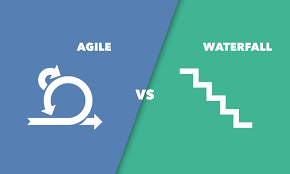
Flexibility or Structure? Deciding Between Agile and Waterfall for Your Project Needs
When it comes to managing projects, choosing the right methodology is essential for success. Two popular approaches, Agile and Waterfall, offer distinct advantages and drawbacks, making it crucial to understand their differences and determine which one best aligns with your project needs. In this blog post, we'll explore the key differences between Agile and Waterfall methodologies and help you decide which one is right for your next project.
Agile Methodology
Agile is an iterative approach to project management that emphasises flexibility, collaboration, and continuous improvement. In Agile, projects are divided into small, manageable iterations called sprints, with each sprint delivering a potentially shippable product increment. Agile methodologies, such as Scrum and Kanban, prioritise adaptability and responsiveness to change, allowing teams to adjust course based on customer feedback and evolving requirements.
Waterfall Methodology
Waterfall is a sequential approach to project management that follows a linear progression of phases, including requirements gathering, design, development, testing, deployment, and maintenance. In Waterfall, each phase must be completed before moving on to the next, with little room for changes or revisions once the project begins. Waterfall methodologies provide a structured framework and clear project milestones, making them well-suited for projects with stable requirements and predictable outcomes.
Choosing the Right Methodology
When deciding between Agile and Waterfall for your project needs, consider the following factors:
- Project Scope: Agile is well-suited for projects with evolving or unclear requirements, while Waterfall is ideal for projects with well-defined scope and deliverables.
- Customer Involvement: Agile encourages regular customer feedback and collaboration, whereas Waterfall may involve less customer interaction until the final product is delivered.
- Flexibility vs. Structure: Agile offers greater flexibility and adaptability to change, while Waterfall provides a structured framework and clear project milestones.
- Team Experience: Consider your team's experience with Agile and Waterfall methodologies, as well as their preferences and capabilities.
Conclusion
Choosing between Agile and Waterfall methodologies requires careful consideration of your project's requirements, constraints, and objectives. While Agile offers flexibility and responsiveness to change, Waterfall provides structure and predictability. At Peritus Digital, we specialise in project management consulting and can help you determine the right methodology for your project needs. Contact us today to learn more about how we can support your project success.